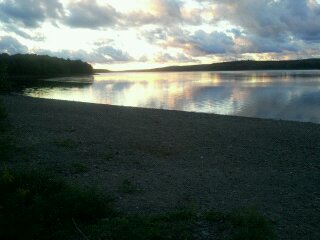The public will have the opportunity to learn about the status of Lake Ontario fisheries and provide input on future trout and salmon management at public meetings in Oswego, Niagara, and Monroe counties this September, New York State Department of Environmental Conservation (DEC) Commissioner Basil Seggos announced today.
"Lake Ontario and its tributaries provide world-class angling opportunities," Commissioner Seggos said. "Under Governor Cuomo's NY Open for Fishing and Hunting Initiative, salmon and trout fishing in Lake Ontario have never been better. New York is committed to ensuring the ecological, recreational and economic benefits of Lake Ontario's sport fisheries are sustained for generations to come."
Recent studies have shown that Chinook salmon raised by sportsmen in "net pens" for three weeks prior to stocking survive twice as well as those stocked by traditional, direct stocking methods. In addition, approximately half of the Chinook salmon in Lake Ontario are naturally reproduced, "wild" fish. In addition, New York and the Province of Ontario stock a combined 2.36 million Chinook salmon each year. Improved survival of pen-reared fish and the contribution of wild fish resulted in an additional six million Chinook salmon per year over the yearly average. While the high numbers of Chinook salmon have produced record-breaking angling, the population is increasing demand on Chinook salmon's primary prey, the alewife.
While the impact of relatively poor alewife survival in two successive winters was not apparent in 2016, DEC experts are concerned with its impact on the size of the adult alewife population in 2017 and beyond, as well as the adult alewife population's ability to sustain the large numbers of trout and salmon in the lake.
Alewife, which have limited tolerance to cold temperatures, are not native to the Great Lakes. The extremely cold winters of 2013/2014 and 2014/2015 resulted in poor survival of alewife produced in those years.
The meeting dates and locations to discuss the issues are as follows:
Monday, September 19: 6:30-9 PM at the Cornell Cooperative Extension Building, 4487 Lake Avenue, Lockport, Niagara County. The meeting is co-hosted by Niagara County Cooperative Extension and the Niagara County Sportfishery Development Board.
Tuesday, September 20: 6:30-9 PM at the Sandy Creek High School auditorium, 124 Salisbury Street, Oswego County. The meeting is co-hosted by the Eastern Lake Ontario Salmon and Trout Association.
Tuesday, September 27: 6:30-9 PM at the Town of Greece Town Hall, 1 Vince Tofany Blvd., Monroe County. The meeting is co-hosted by the Monroe County Fishery Advisory Board.
Staff from DEC will present information, and the audience will have ample time to ask questions and provide input on potential management actions. Background
information for these meetings can be found at DEC's website. Those who cannot attend a meeting can provide comments at
fwfishlo@dec.ny.gov through
October 14, 2016. For further information contact Steven LaPan, New York Great Lakes Fisheries Section Head at Cape Vincent Fisheries Research Station,
(315) 654-2147.























